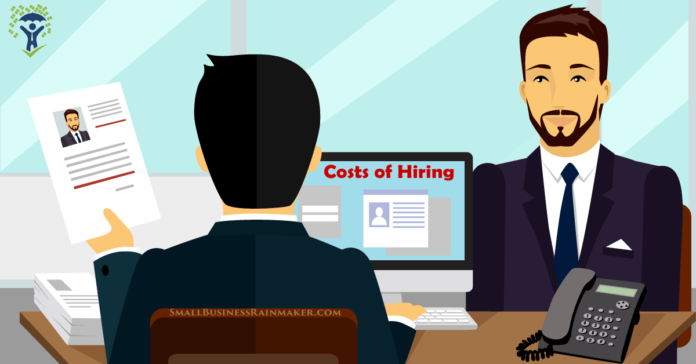What is The Cost of Hiring New Employees? If you’re like most companies, your highest cost is labor, and you’re not paying attention to other costs associated with hiring a new employee. However, onboarding costs should not be overlooked. Hiring new employees is not cheap, and understanding the costs associated with onboarding is essential for making intelligent hiring decisions. If you don’t have time to handle onboarding, consider hiring external help or internal service to know the typical cost of hiring an employee.
Relocation costs
When hiring new employees, discussing relocation expenses with them is essential. For example, the new employee may have to break their current lease and move to another city, which will cost money. In addition, landlords may require specific termination fees or need the employee to pay rent until they find a new tenant. Employers can help cover these expenses by offering relocation packages and a lump sum. These packages typically cover one month’s salary or more.
The relocation costs are usually covered by the new employer, which often includes paying for the new employee’s family’s travel expenses and meals en route to the new location. The employer will also pay for the new employee’s interim housing and meals for up to six months. The new employee typically stays in a corporate apartment or extended-stay hotel during this time. The company will also reimburse the cost of moving expenses for the first month and the first few months.
Training costs
There are many reasons why companies incur training costs when hiring new employees. Poorly designed training can lead to higher employee turnover. You may need to purchase training materials and equipment for each new employee, and the time you spend training is money you won’t be making. In some industries, external experts may be required to train new employees. You may avoid these expenses if you have a large workforce.In 2018, companies spent an average of $1,110 per employee on training. This was up $200 from the year before. Companies spent nearly 91 billion dollars on training in the U.S. from 2016 to 2017. While this may seem like a lot, it is essential to remember that training requires time. An average company spends 42.1 hours per employee on training annually.
Onboarding costs
Onboarding costs are one of the most significant expenses in the hiring process. Despite the high turnover rate, a strong onboarding experience has a more powerful positive impact on the employee than salary alone. However, new employees can experience stress and turnover, and a poor onboarding experience can result in high turnover rates and exit interviews. In addition to adding costs, a poor onboarding experience can also damage your company’s reputation.
For example, you may need to provide new office equipment, software credentials, ergonomic chairs, monitors, parking permits, branded clothing, and more. These are all costs to consider when calculating the cost of hiring a new employee. Glassdoor recommends setting up an inventory system for equipment and software licenses to estimate your total onboarding costs accurately. Then, divide those costs by the number of new hires to better understand the total cost of hiring a new employee.
Salary
Adding a new employee comes with a price tag, but it can be worth the investment. The total cost of hiring a new employee ranges from $43,750 to $49,000, and some of those costs are mandatory. But the costs can also be offset by the tax savings from hiring new employees. So here are some tips to minimize the cost of hiring new employees. Hopefully, you’ll find this helpful information.
The costs of hiring new employees vary by region and industry. For example, hiring one person in the manufacturing or professional industries can cost upwards of $5,000. In contrast, hiring one employee in the services industry can cost well over $1,000. This is because hiring a new employee can involve several personal expenses, including advertising costs, in-house recruiter salaries, third-party recruiter fees, travel expenses, employee referral bonuses, and more. Additionally, if the employee’s salary exceeds $50,000, the cost can rise to nearly $75,000 a year.
Other costs
Besides salary and hourly wages, new employees will require equipment, software credentials, and even branded clothing. The costs of onboarding new employees may not be accounted for in the total cost per hire, but they affect the company’s bottom line. Employers may also have to pay for insurance and other employee benefits, such as health insurance and retirement funds. The costs of onboarding new employees will vary depending on the type of business, the number of new hires, and the type of benefits offered.
Besides salary, other costs of hiring a new employee include payroll taxes, benefits, and equipment needed for the new employee. These expenses can add up to a considerable amount. Employee growth initiatives, such as retirement plans, can also add to the overall cost. The amount of benefits offered depends on the level of perks provided. Providing a competitive compensation plan and the proper bonuses for your employees can help retain them.
































